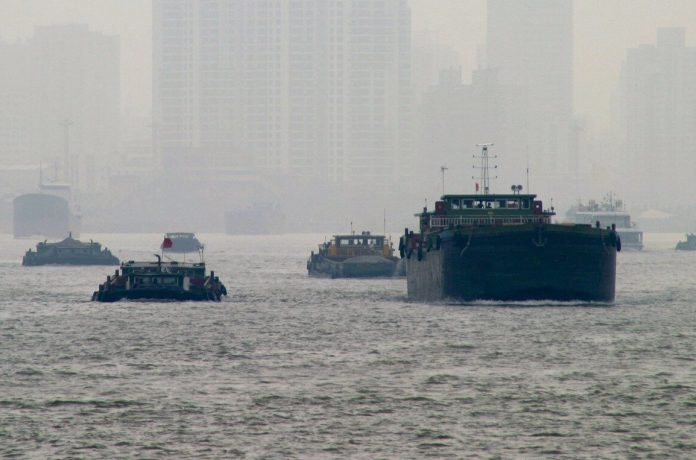New research indicates that significant enhancement of secondary aerosol formed in the atmosphere via gas-to-particle conversion, together with long-lasting regional transport, may be the cause of severe haze over China despite a dramatic reduction in emissions during the COVID-19 shutdown. The findings are published in Geophysical Research Letters.
During the Chinese Lunar New Year holiday between January 24 and February 10, 2020, China was in an unprecedented state of shutdown because of COVID-19, with mobility, energy demands, and industrial pollution emissions remaining far below their normal levels. Nevertheless, a high and widespread haze pollution was observed over Eastern China.
To investigate this puzzling occurrence, Yunhua Chang, Professor, of the Nanjing University of Information Science & Technology, Ru-Jin Huang, Professor, of the Chinese Academy of Sciences, and their colleagues analyzed the chemical components of the air in and out of Shanghai before, during, and after the Chinese New Year holidays in 2019 and 2020, and they performed atmospheric transport modeling, a method to track particles and trace gases that are dispersed by atmospheric winds.
The team found that secondary aerosol formation that interacts with long-range transport likely caused the long-lasting haze during the COVID-19 pandemic.
The results highlight the need for joint management efforts and control strategies across large areas to effectively clear China’s air.
“We hope our findings can inform future regulatory policies to mitigate China’s haze-associated problems,” said Dr. Chang.
“Additional studies are needed to pinpoint the role of atmospheric oxidation capacity–which is affected by emission reductions of air pollutants–in the formation of secondary aerosols,” added Dr. Huang.
This paper is part of an ongoing special collection of research in AGU journals related to the current pandemic.
###
SPECIAL COLLECTION: The COVID-19 Pandemic: Linking Health, Society and Environment
Additional Information
NOTE: The information contained in this release is protected by copyright. Please include journal attribution in all coverage. For more information or to obtain a PDF of any study, please contact:
Penny Smith +44 (0) 1243 770448 (UK)
Follow us on Twitter @WileyNews
Full Citation: “Puzzling haze events in China during the coronavirus (COVID-19) shutdown.” Yunhua Chang, Ru-Jin Huang, Xinlei Ge, Xiangpeng Huang, Jianlin Hu, Yusen Duan, Zhong Zou, Xuejun Liu, and Moritz F. Lehmann. Geophysical Research Letters; Published Online: 9 June, 2020 (DOI: 10.1029/2020GL088533)
URL Upon Publication: https:/
Author Contact: Ru-Jin Huang ([email protected]); Yunhua Chang ([email protected])
About the Journal
Geophysical Research Letters (GRL) publishes high-impact, innovative, and timely research on major scientific advances in all the major geoscience disciplines. Papers are communications-length articles and should have broad and immediate implications in their discipline or across the geosciences. GRL maintains the fastest turn-around of all high-impact publications in the geosciences and works closely with authors to ensure broad visibility of top papers.
About Wiley
Wiley drives the world forward with research and education. Through publishing, platforms and services, we help students, researchers, universities, and corporations to achieve their goals in an ever-changing world. For more than 200 years, we have delivered consistent performance to all of our stakeholders. The Company’s website can be accessed at http://www.
TDnews















